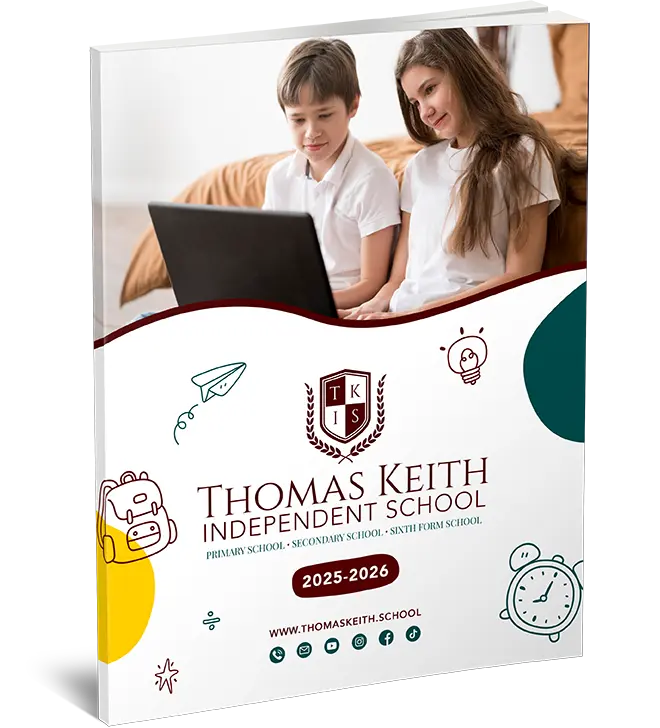Introduction to Homeschooling Flexibility
Homeschooling flexibility is an integral aspect of education that provides families with the liberty to tailor learning experiences to individual needs and schedules.
At Thomas Keith Independent School, we recognise that flexibility in homeschooling can greatly enhance educational outcomes by allowing parents and educators to adapt to the unique demands of their children’s learning journeys.
The concept of homeschooling flexibility can be particularly advantageous in accommodating diverse learning styles, paces, and needs, which can differ significantly from one child to another.
Traditional schooling often adheres to rigid schedules and standardised curricula, but homeschooling flexibility offers an alternative by empowering families to create a more adaptable learning environment.
In practice, flexibility in homeschooling means that parents can adjust daily schedules to suit their child’s optimal learning times, incorporate breaks when necessary, and explore subjects in greater depth or breadth according to the child’s interest and curiosity.
This adaptability is not only beneficial for the child’s educational development but also enhances family cohesion by allowing learning to occur seamlessly alongside family commitments and responsibilities.
Moreover, homeschooling flexibility enables the integration of real-world experiences into education, such as field trips, library visits, and interaction with community resources, which serve to enrich the curriculum beyond textbooks and conventional materials.
For Thomas Keith Independent School, promoting homeschooling flexibility involves providing resources and guidance to help parents design educational plans that are both personalised and effective, ensuring that students progress at an appropriate pace while meeting educational standards.
In conclusion, the essence of homeschooling flexibility lies in its ability to transform education from a one-size-fits-all model to a bespoke experience tailored to the learner’s profile, thus fostering a more engaging and effective learning journey.
Through this approach, families can achieve a harmonious balance between education and daily life, making the most of the opportunities that homeschooling flexibility offers.

Why Flexibility is a Key Benefit of Homeschooling
Homeschooling flexibility is a compelling advantage that can significantly enhance a child’s educational journey.
At Thomas Keith Independent School, we recognise the myriad of benefits that flexibility in homeschooling offers to both parents and students.
One of the primary advantages of homeschooling flexibility is the ability to create a bespoke learning schedule that accommodates the unique needs and interests of each child.
This customisation of education ensures that learning is tailored to fit the daily rhythm of the family, enhancing both the academic and personal development of the student.
This flexibility extends beyond scheduling to include the selection of curriculum and teaching methods.
Parents have the autonomy to choose educational materials that align with their child’s learning style and developmental stage.
This ability to adapt and customise not only harnesses the child’s innate curiosity but also alleviates the common pressures associated with traditional schooling systems.
Moreover, homeschooling flexibility allows learners to delve deeply into subjects of interest at their own pace.
Students can spend more time mastering complex topics without the rigid confines of a one-size-fits-all curriculum.
This fosters a deeper understanding and passion for learning, promoting a more enriched educational experience.
The role of a parent or guardian in this tailored educational approach is crucial, as they are well-placed to respond swiftly to their children’s academic needs and adjust strategies accordingly.
In addition to academic benefits, homeschooling flexibility opens up opportunities for students to engage with their broader community.
The flexible schedule allows families to incorporate experiential learning through field trips, cultural experiences, and other outside-the-classroom activities.
These experiences not only enhance educational content but also help children develop vital life skills, such as critical thinking and adaptability.
Homeschooling flexibility also supports families in maintaining a healthier work-life balance.
Without the constraints of standardised school hours, families can adapt their educational approach to better fit their lifestyle and commitments.
This balance is particularly advantageous in busy households where parents juggle multiple responsibilities.
In conclusion, flexibility in homeschooling is a powerful tool that empowers students and parents alike.
By fostering a learning environment that is adaptive and student-centred, Thomas Keith Independent School ensures that every child has the chance to thrive academically and personally.
Through homeschooling flexibility, families can craft an education path that reflects their values and meets the specific needs of their children, making it an increasingly popular choice for modern education.
How to Implement a Flexible Homeschooling Schedule
Implementing homeschooling flexibility effectively requires a thoughtful approach to creating a schedule that accommodates both educational needs and family dynamics.
The core advantage of homeschooling flexibility is its ability to adapt to the unique rhythms and requirements of children and parents alike.
At Thomas Keith Independent School, we recognise the importance of flexibility in your homeschooling approach, ensuring it complements our online education programmes.
Begin by assessing the needs of your child, which is pivotal in customising a flexible homeschooling schedule.
Every child is unique, and thus their optimal learning times can vary significantly.
Some students may thrive in an early morning study session, while others may find their productivity peaks in the afternoon.
Once you understand your child’s preferences, you can start structuring a daily plan.
Include core subjects like mathematics, English, and science in times where your child naturally focuses well.
The beauty of homeschooling flexibility is that it allows off-peak hours for subjects that may require a creative or relaxed mindset, such as art or project-based learning.
Incorporate regular breaks throughout the day to prevent fatigue and maintain concentration.
Short, frequent intervals can assist in breaking the monotony, allowing students to return to their studies refreshed and ready to learn.
This approach also respects the philosophy of homeschooling flexibility, where learning isn’t confined to continuous hours but interspersed with meaningful breaks.
Leveraging resources available through Thomas Keith Independent School and external sources can enrich the flexible home education experience.
Utilise online platforms for interactive components or local libraries for hands-on research, ensuring a diverse and engaging learning journey.
Communication within the family is crucial when implementing a flexible homeschooling schedule.
Involve your child in building a timetable, thus fostering responsibility and ensuring the schedule reflects their learning style and interests.
Open discussions about what works or needs adjusting can ensure the schedule remains dynamic and responsive to changing needs.
Moreover, embrace the adaptability that homeschooling flexibility offers.
If a learning day doesn’t go as planned, having the freedom to rearrange activities or extend time on a challenging subject can make a significant difference in educational outcomes.
Ultimately, the art of crafting a flexible homeschooling schedule lies in balancing structure with adaptability.
This balance empowers students, aligns educational objectives with personal development, and embodies the essence of flexibility in your homeschooling approach.
At Thomas Keith Independent School, we support this balance with resources and guidelines that enrich both teaching and learning experiences for families.

Balancing Flexibility with Structure
Homeschooling flexibility offers numerous advantages, but finding the right balance between flexibility and structure is crucial for success.
At Thomas Keith Independent School, we recognise the importance of creating a homeschool environment that is both adaptable and organised.
The essence of homeschooling flexibility is the ability to tailor education to fit the unique needs of each child while maintaining a sense of order.
Establishing a routine is vital in achieving this balance.
A flexible framework allows room for spontaneity and unexpected learning opportunities, but a regular schedule helps keep children on track and instils discipline.
Parents can plan a weekly schedule that includes core subjects, such as mathematics and language arts, while allowing time for interests and extracurricular activities.
By incorporating designated time slots for lessons and free exploration, students can benefit from a well-rounded education.
Homeschooling flexibility enables parents to adjust timetables without entirely foregoing structure, ensuring educational goals are met.
For example, if a child is particularly engaged in a science project, the parent can extend lesson time to delve deeper into the topic.
Meanwhile, oversight is still maintained with other scheduled subjects, ensuring no area is neglected.
The importance of flexibility in your homeschooling approach lies in its ability to adapt lessons to different learning styles and paces, ensuring children remain engaged and enthusiastic about their education.
Striking a balance between flexibility and structure requires continual assessment and adjustments as needed, considering the student’s development and interests.
With the right strategies, homeschooling can be both flexible and organised, providing a comprehensive and enjoyable learning experience.

Customising Curriculum to Meet Your Child’s Needs
Customising the curriculum is essential for leveraging homeschooling flexibility to cater to your child’s unique educational requirements.
At Thomas Keith Independent School, we recognise the importance of flexibility in your homeschooling approach to ensure that each child thrives academically.
By tailoring a curriculum, parents can address specific areas of interest and development, allowing children to advance at a pace that suits their individual learning style.
The core advantage of homeschooling flexibility is the ability to integrate subjects that reflect your child’s enthusiasm, making learning engaging and effective.
Implementing a customised curriculum requires careful planning and understanding of both the child’s needs and educational goals.
Start by assessing your child’s strengths, weaknesses, and interests.
For instance, if your child shows an aptitude for mathematics but struggles with reading, you might choose to incorporate more hands-on mathematical activities while simultaneously introducing reading materials that align with their interests.
The choice of instructional materials is also pivotal.
Select resources that are adaptable to your child’s learning pace.
For primary school students, this might include interactive workbooks, while online courses can be effective for secondary and sixth-form learners.
This adaptability is part of why homeschooling flexibility is becoming a popular educational choice.
Furthermore, regularly reviewing and adjusting the curriculum is crucial to meet the evolving needs of your child.
Observing how your child interacts with different materials and subjects will guide you in making necessary adjustments, ensuring the curriculum remains relevant and challenging.
Incorporating elements such as educational technology can further enhance your custom curriculum.
Digital platforms offer diverse learning experiences that can accommodate various learning styles, adding to the homeschooling flexibility by providing interactive and multimedia resources.
Engagement is enhanced and understanding is deepened through varied instruction methods.
Finally, involve your child in the curriculum customisation process.
This empowers them and fosters a sense of responsibility and enthusiasm for their learning journey, reinforcing the essence of homeschooling flexibility.
By maintaining an adaptable curriculum tailored to your child’s needs, you not only optimise their academic potential but also cultivate a lifelong love for learning.
At Thomas Keith Independent School, we support parents in creating dynamic, customised educational experiences that reflect the best aspects of homeschooling flexibility.

Managing Challenges in a Flexible Homeschool Environment
Homeschooling flexibility offers a plethora of benefits, yet it also presents a unique set of challenges that require strategic management.
Adapting to a flexible homeschool environment demands an understanding of the potential hurdles and implementing solutions to overcome them effectively.
Key among these challenges is maintaining motivation and discipline in a less structured setting.
Many parents and children face difficulties in staying on task without the traditional school timetable.
To counteract this, it’s beneficial to create a routine that includes start and end times, allowing room for flexibility while ensuring educational objectives are met.
Another challenge is balancing flexibility with the need for social interaction, which is typically plentiful in conventional schools.
Homeschooling flexibility can sometimes limit social opportunities, making it essential for parents to organise group activities or join homeschooling networks to facilitate social engagement.
Additionally, resource management is a crucial aspect of adapting to a flexible homeschool approach.
Parents must ensure that educational materials such as textbooks, workbooks, and online resources are diverse and readily accessible to accommodate the ever-changing learning environment.
Lastly, one may encounter different learning paces among siblings if they are homeschooled together.
In such instances, the focus should be on customising learning paths to meet each child’s unique needs and harnessing the adaptability of homeschooling flexibility.
Utilising the above strategies can significantly mitigate challenges, making the flexible homeschool environment both effective and enjoyable at Thomas Keith Independent School.
By maintaining an atmosphere of understanding and consistent adjustment, a dynamic and successful homeschooling experience is achievable.

The Role of Technology in Flexible Homeschooling
Homeschooling flexibility can be significantly enhanced by the effective use of technology, which plays a crucial role in adapting educational approaches to fit the diverse needs of students.
At Thomas Keith Independent School, the advent of digital tools and resources means that students can access a wide range of curriculum materials, allowing for a more personalised learning experience.
One of the key benefits of integrating technology into homeschooling is the ability to customise learning schedules.
Parents and students can choose the times and environments that best suit their individual learning styles, which is a critical component of homeschooling flexibility.
Through various online platforms, students can engage with interactive content that makes even challenging subjects more accessible and engaging.
This flexibility in homeschooling not only caters to academic needs but also supports personal development by allowing students the autonomy to explore topics that interest them further.
Moreover, the incorporation of technology means that students are not bound by geographic constraints.
They can connect virtually with peers and educators from around the world, expanding their educational experience beyond traditional classroom boundaries.
By using forums and digital collaboration tools, students benefit from diverse perspectives and knowledge-sharing opportunities that are essential in today’s global society.
Despite the obvious advantages, it is important to manage screen time carefully to avoid over-reliance on digital media.
Balancing technology use with traditional learning methods ensures a well-rounded homeschool education that maintains the essence of flexibility while fostering discipline and focus.
In conclusion, technology significantly contributes to the homeschooling flexibility at Thomas Keith Independent School by providing dynamic learning opportunities, fostering global connections, and enabling adaptive educational practices.

Real-Life Examples of Flexible Homeschooling
Homeschooling flexibility offers numerous real-life examples of how a tailored approach can benefit both the parent and the child in the educational journey.
These examples illustrate how the importance of flexibility in your homeschooling approach can create a dynamic and personalised learning environment.
One notable example involves a family that prioritises travel as part of their homeschooling curriculum.
By utilising homeschooling flexibility, this family incorporates world travel into their lessons, allowing their children to engage in cultural experiences that enrich their understanding of history and geography.
This approach highlights how flexibility can be integrated into homeschooling to make learning more engaging and relevant.
Another common example is the use of technology to facilitate learning.
Families employing online resources can adjust the pace and style of their teaching to fit the student’s needs, demonstrating again how homeschooling flexibility can be advantageous.
By choosing customised lessons and interactive online platforms, parents can ensure their children remain engaged and motivated.
Further illustrating the benefits, some families opt to start their homeschooling day later than typical school hours.
This flexibility allows parents to align educational activities with their child’s peak learning periods, which often vary from the traditional schedule followed by institutional schools.
Such real-life applications of homeschooling flexibility not only drive educational success but also contribute to greater family cohesion and satisfaction.
Flexible homeschooling plans, as shown by these examples, empower parents to create a learning environment that is both nurturing and effective, matching their child’s unique learning style and pace.
By analysing these examples, it becomes clear that homeschooling flexibility can be adapted to fit a multitude of lifestyles and educational goals, providing an enriching alternative to conventional schooling methods.
Conclusion: Embracing Flexibility in Homeschooling
Embracing homeschooling flexibility is pivotal for creating a personalised and responsive educational experience that aligns with a child’s unique needs.
Homeschooling flexibility allows parents to adapt teaching methods and schedules, fostering an environment where students can thrive academically and emotionally.
At Thomas Keith Independent School, we understand the importance of flexibility in moulding a curriculum that benefits every student individually.
By leveraging homeschooling flexibility, parents can seamlessly integrate extracurricular activities, cater to different learning styles, and adjust schooling methods as needed.
Moreover, this flexibility helps in nurturing a child’s curiosity and encourages independent learning, essential qualities that support lifelong education.
In conclusion, the importance of flexibility in your homeschooling approach cannot be overstated, as it ensures that education is not only effective but also enjoyable and enriching for both parents and children.




